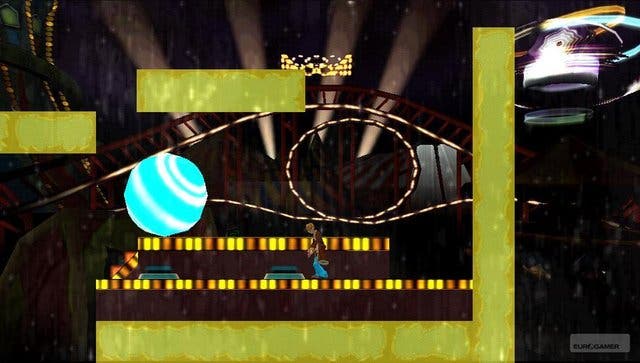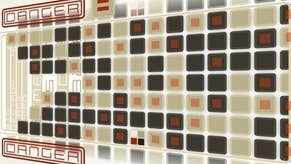Crush
2D or not 2D?
Using the d-pad, you're able to flip your viewpoint 90 degrees around you, and also upwards for a top-down view. The twist is that a press of the L1 shoulder button crushes your viewpoint, flattening the level from whichever angle you're looking. Crush from the side, and distant platforms are compressed onto the same spatial plane, allowing you to simply walk across. Crush from above and unassailable peaks are squished to floor level. Move to where you want to go, hit L1 again and the game slams back into 3D, with Danny relocated to wherever his current platform belongs in the fleshed-out world. Confused? Go and watch this gameplay trailer then come back. It should all make sense then.

It's an incredibly clever method of navigating 3D spaces - a kind of hyper-zen-physics lesson, taught by Stephen Hawking to Mario and Luigi - and at first it's almost enough to break your brain. Few games challenge you to change your entire way of thinking, and puzzle game lightweights or those who struggle with spatial awareness could be left floundering before the tutorial stages are even over. Each level is a self-contained quandary, with an exit that only opens up when you've collected enough of the glowing marbles littering the block-based scenery. Getting these marbles is your first order of business, followed by the not-inconsiderable task of reaching the exit.
And this is Crush's biggest flaw. While its concept is reasonably simple to grasp in theory, at least once you've seen it action, it doesn't give you much time to put the basics into practice before it starts throwing even more complications into the mix. Blocks that move, blocks that become intangible when 2D, alarm clocks that place sudden time limits on your moves, blocks that contain flailing tentacles, or giant cockroaches that must be squashed from above - all are covered in the first tutorials, and soon crop up in the game proper. Just as you're starting to suspect that you might possibly be almost getting the hang of the essential 2D-to-3D way of thinking, more elements are introduced. It can all feel a bit much, and will almost certainly result in fun-spoiling frustration for less patient gamers.

This frontloading means that, even for those who make headway into the 40 stages on offer, the pacing is askew. You begin to realise that you've seen the bulk of what the game will throw at you and, as you plough onwards through variations on a theme, the sheen starts to wear off sooner than you'd like. Secrets have been squirreled away in each level to elongate the challenge - trophy cups unlock time trials, while jigsaw pieces provide you with bonus artwork - but as these become harder and harder to find, let alone collect, the effort to reward ratio takes a dip.
Despite this admittedly minor annoyance, Crush is a rare beast and deserving of praise for the many things it gets so very, very right. There's a genuine sense of achievement and enjoyment when a seemingly impossible level suddenly clicks (or crushes) into place, and the confident way the game uses its central conceit as more than just a gimmick is undeniably reassuring and appealing. It suggests real thought and care has gone into optimising the experience for the player, rather than just providing nice trailers and a tech demo for future projects. Playing to the strengths of the PSP's graphical processor, while delivering bite-sized chunks of mental gymnastics ideal for portable play, Crush proves you don't need a stylus and dual screen to discover a fresh angle on handheld puzzling.









